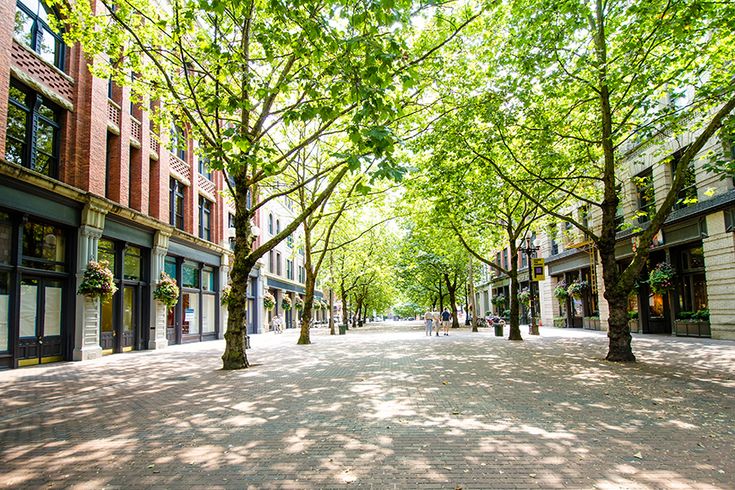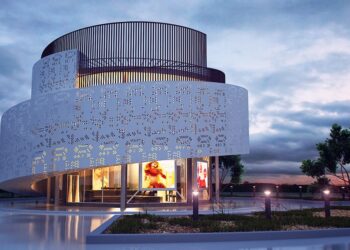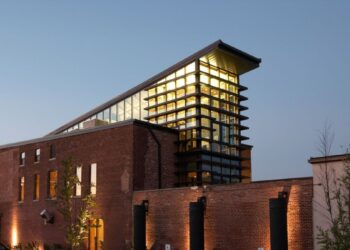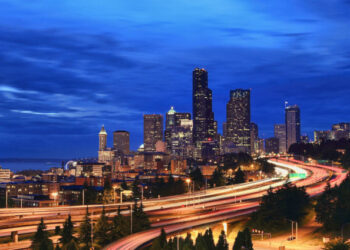For much of the 20th century, urban planning was dominated by a singular, powerful idea: the city should be built for the automobile. This philosophy led to the development of sprawling suburbs, wide multi-lane highways, and a built environment where pedestrian life was an afterthought. The result was a world of isolation, environmental degradation, and public health crises. Today, a new, more human-centric vision is taking hold. This vision champions the creation of walkable cities—urban landscapes where the act of walking is not just a form of exercise but a primary mode of transport and a cornerstone of community life. Walkable cities are not an architectural fad; they are a sophisticated, holistic solution to some of the most pressing challenges facing modern society. By prioritizing the pedestrian, we are not just redesigning streets; we are building healthier, more economically vibrant, more sustainable, and more equitable communities. This comprehensive article will delve into the core principles of walkable urbanism, explore its immense and multifaceted benefits, detail the strategies for transforming car-centric cities, and examine the challenges and the promising future of this essential movement that is redefining our relationship with the places we call home.
What Defines a Walkable City?

A walkable city is more than just a place with sidewalks. It is a complex ecosystem where a series of interconnected elements work in harmony to create a truly pedestrian-friendly environment. These key components are the building blocks of successful walkable urbanism.
A. Density and Mixed-Use Zoning: The foundation of walkability is proximity. A city cannot be walkable if the distance between homes, jobs, schools, and essential amenities is too great to cover on foot. Walkable cities are characterized by mixed-use zoning, where residential, commercial, and recreational spaces are integrated into the same neighborhoods. This allows residents to accomplish most of their daily tasks—from buying groceries to working and socializing—within a comfortable walking distance, typically a 5 to 15-minute radius.
B. Pedestrian-Friendly Infrastructure: The physical infrastructure must be designed with the pedestrian in mind. This includes wide, well-maintained sidewalks that are free from obstructions and are accessible to people of all abilities, including those using wheelchairs or strollers. Walkable cities also feature frequent, clearly marked crosswalks, pedestrian signals, and dedicated pedestrian-only zones. The quality of the walking surface, from smooth paving to aesthetic landscaping, is also critical for a pleasant experience.
C. Human-Scale Urban Design: The design of buildings and public spaces plays a crucial role in making a city feel welcoming to pedestrians. Human-scale design means that buildings have a manageable height, with engaging and active ground floors that feature shops, cafes, and street-level windows. A continuous street wall with a diverse mix of facades, instead of blank walls or parking lots, creates a visually stimulating and safe environment. This design philosophy prevents the urban landscape from feeling overwhelming or desolate.
D. Public Transit Connectivity: Walkability and public transit are symbiotic. A truly walkable city understands that walking is the primary mode of transport for short distances, while public transit is the solution for longer trips. Walkable cities are designed around transit hubs, with bus stops, subway stations, and train stations all easily accessible on foot. High-quality public transport makes it possible for people to live a car-free or car-light lifestyle, expanding the reach of walkability beyond a single neighborhood.
E. Safety and Security: For a city to be walkable, people must feel safe walking in it at all hours of the day. This involves well-lit streets, active street life, and a sense of “eyes on the street”—the informal surveillance provided by people going about their daily lives, as famously articulated by urbanist Jane Jacobs. Traffic calming measures, such as narrower streets, speed bumps, and roundabouts, also play a crucial role in making streets safer for pedestrians by slowing down cars and reducing the number of accidents
The Multifaceted Benefits of Walkable Cityscapes
The benefits of creating walkable cities are extensive and profound, impacting everything from individual health to the health of the planet.
A. Health and Wellness: Walkability is a direct prescription for a healthier population. It encourages physical activity, which helps to combat chronic diseases such as obesity, heart disease, and diabetes. The simple act of walking also has proven mental health benefits, reducing stress and anxiety. Furthermore, walkable communities often have better air quality due to reduced car emissions, which leads to fewer respiratory illnesses.
B. Economic Vitality: Walkability is a powerful economic engine. Pedestrian-friendly streets with active storefronts attract more foot traffic, which directly translates to increased sales for local businesses. In addition, properties in walkable neighborhoods often command a higher value, boosting the tax base and making the city a more attractive place for investment. By reducing a city’s reliance on car infrastructure, funds can be redirected to public amenities that further enhance the local economy.
C. Environmental Sustainability: A key argument for walkability is its environmental impact. By making it easier and more convenient to walk, bike, or take public transit, cities can drastically reduce their reliance on cars. This leads to a significant decrease in traffic congestion, fossil fuel consumption, and greenhouse gas emissions. A smaller carbon footprint makes the city more resilient and contributes to the global effort to combat climate change.
D. Social Equity and Community: Walkable cities are inherently more equitable and socially vibrant. By reducing the need for a car, they make it easier for people from all socioeconomic backgrounds to access jobs, education, and essential services. The presence of public spaces, parks, and lively street life fosters a sense of community, encouraging chance encounters and social interaction among neighbors. This strengthens the social fabric of the city and helps to combat the urban anonymity that often plagues car-centric suburbs.
Key Strategies for Building a Walkable City
The transition from a car-centric to a walkable city is a long-term project that requires a strategic, multi-pronged approach from urban planners and policymakers.
A. Zoning and Land Use Reform: The first and most critical step is to reform zoning laws. This means moving away from rigid, single-use zoning that separates residential, commercial, and industrial areas and embracing mixed-use zoning that allows for a dense, integrated urban fabric. This change enables the proximity and diversity of destinations that are essential for walkability.
B. Streetscape Improvements: Transforming streets is a powerful way to make a city more pedestrian-friendly. This includes:
- Adding Trees and Greenery: Street trees provide shade, improve air quality, and create a more pleasant walking experience.
- Installing Benches and Public Art: Benches offer a place for people to rest and socialize, while public art and engaging storefronts provide visual interest, encouraging people to linger and explore.
- Improving Lighting: Well-lit streets are essential for making people feel safe and secure while walking at night.
C. Traffic Calming Measures: To make streets safer for pedestrians, it is necessary to actively manage and reduce car traffic. This can be achieved through a variety of measures, including:
- Road Diets: Reducing the number of car lanes to make way for bike lanes and wider sidewalks.
- Roundabouts and Bump-outs: These physical alterations to the street slow down traffic and shorten the distance pedestrians have to cross.
- Lowering Speed Limits: Simply reducing the speed limit on a street can dramatically increase the safety of pedestrians and cyclists.
D. Integrating Green Spaces: Parks, plazas, and linear greenways are crucial for a walkable city. They provide a place for recreation, a destination for walking, and a connection to nature in an urban environment. A network of interconnected green spaces creates a “green infrastructure” that makes walking a more enjoyable and appealing activity.
The Urbanism Evolution

The walkable city movement is a direct response to the failures of post-war urban planning. The rise of the automobile in the mid-20th century led to a planning model known as “urban sprawl”—low-density, single-use, car-dependent development. This model, with its disconnected communities and reliance on private cars, was celebrated as a sign of progress. However, it quickly became clear that it was creating isolated communities, exacerbating traffic congestion, and generating immense environmental costs. The work of influential urban critics like Jane Jacobs, who championed the importance of lively, diverse, and human-scaled neighborhoods, laid the intellectual groundwork for a new school of thought known as New Urbanism. This movement advocated for a return to traditional city planning principles, with a focus on walkability, mixed-use development, and a dense, connected urban fabric. The walkable city is the modern embodiment of these principles.
Global Examples of Success
Cities around the world are implementing walkable urbanism with remarkable success, demonstrating the power of this approach in diverse cultural and geographical contexts.
A. Copenhagen, Denmark: Widely considered the gold standard for walkability and cycling. Over the last few decades, Copenhagen has systematically removed car lanes and replaced them with bike lanes, pedestrian streets, and public squares. Today, the city is a vibrant hub where more than half the population commutes by bicycle, and public spaces are teeming with life, proving that a city can thrive with fewer cars.
B. Portland, Oregon, USA: Portland is a leading example of how an American city can pivot from a car-centric model to a pedestrian- and transit-friendly one. The city has a dense, mixed-use urban core, a high-quality light rail system, and a robust network of bike lanes and walkable neighborhoods. The city’s focus on creating vibrant, local communities has made it a model for other North American cities seeking to curb urban sprawl.
C. Barcelona, Spain (Superblocks): Barcelona’s “superblocks” or superilles project is an innovative approach to reclaiming city space for pedestrians. By closing off a nine-block area to through traffic, the city has transformed the streets within the superblocks into public plazas and green spaces. Cars are restricted to a low-speed perimeter, making the interior of the superblocks safe and enjoyable for walking, cycling, and socializing.
Overcoming the Challenges of Walkability
The path to creating a walkable city is not without its hurdles, particularly in cities that were built with the car in mind.
A. Existing Infrastructure: The biggest challenge is retrofitting a city’s existing infrastructure. It can be expensive and logistically complex to add new sidewalks, bike lanes, and public squares to an urban landscape that has been dominated by cars for a century. This requires long-term planning and significant public investment.
B. Political and Public Resistance: Changing deeply ingrained habits and challenging the cultural dominance of the automobile can be politically difficult. Residents and businesses may resist changes that reduce parking or increase traffic congestion in their area. Overcoming this requires strong political leadership, extensive public engagement, and a clear communication of the long-term benefits.
C. Funding and Resources: Large-scale urban transformation projects require significant funding. Cities must find creative ways to finance these projects, whether through public-private partnerships, grants, or the reallocation of funds from road-building to pedestrian infrastructure.
The Future of Urbanism
As walkable urbanism becomes more mainstream, a new generation of urban thinkers is pushing the boundaries of what a pedestrian-friendly city can be.
A. The 15-Minute City: This concept, which has gained significant traction, envisions a city where all essential amenities—from a person’s home to their job, school, and local park—are within a 15-minute walk or bike ride. The 15-minute city is the logical extension of walkable urbanism, creating hyper-local, self-sufficient neighborhoods that are connected by efficient public transit for longer journeys.
B. Integration with Smart Technology: Future walkable cities will be integrated with smart technology to improve the pedestrian experience. This includes smart traffic signals that prioritize walkers, real-time public transit information, and intelligent street lighting that adjusts based on pedestrian activity.
C. Designing for All Abilities: The future of urbanism is inclusive. This means designing cities that are not just walkable but also accessible to people of all ages and physical abilities. This includes features like tactile paving for the visually impaired, curb cuts, and fully accessible public transport, ensuring that everyone can participate in city life.
Conclusion
Creating walkable cities is one of the most powerful and hopeful endeavors of modern urbanism. It is a philosophy that recognizes that our cities are not just a collection of buildings and roads but are the living, breathing stages for human life. By putting the pedestrian at the center of the design process, we are not just building better cities; we are building better societies—healthier, more connected, and more sustainable communities for generations to come.










Discussion about this post